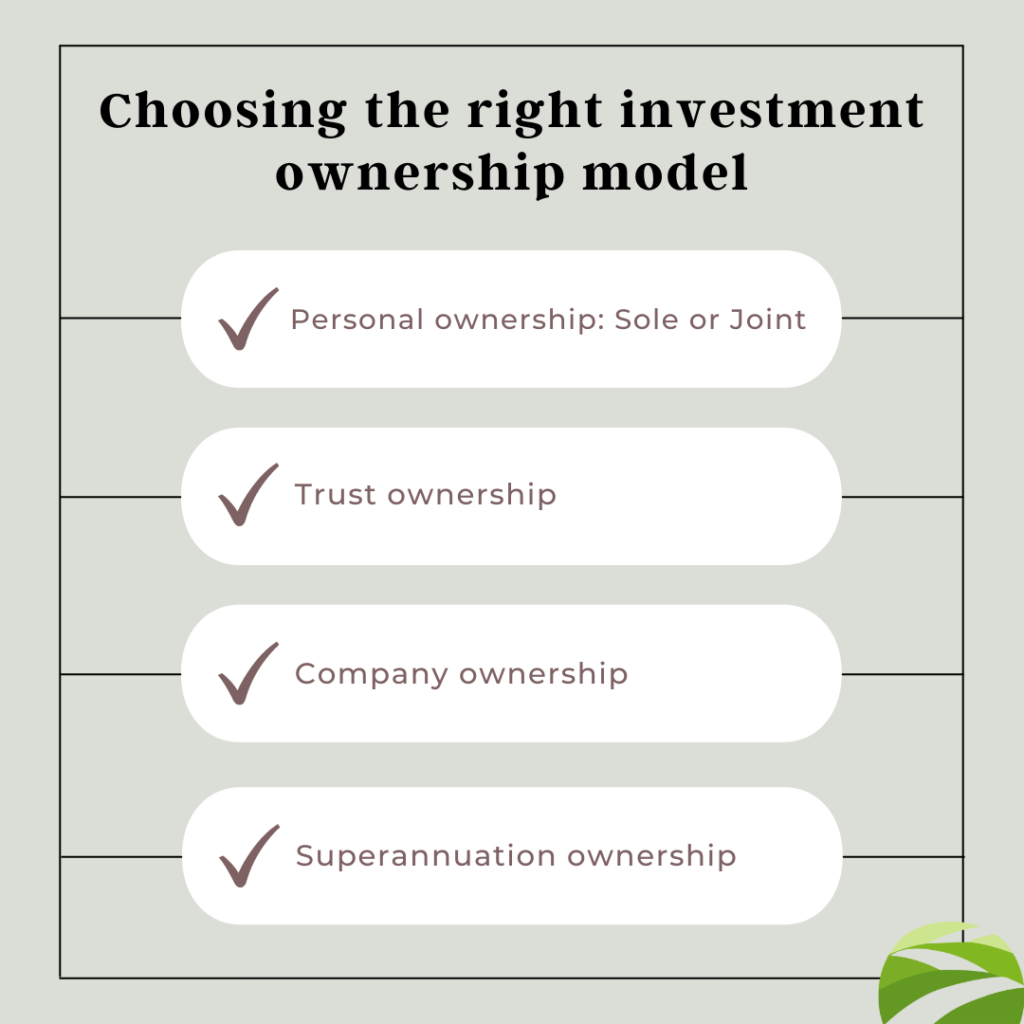Investment Ownership Model

When investing, it’s vital to get the following things right:
- Your investments must be suitable for your investment time frame
- They must be diversified
- The ownership model and tax structure should also be considered…
However, selecting the right ownership model is often something that people tend to overlook. How you own your investment – and who you own it with – is a decision you’ll want to get right straight from the beginning.
That’s because the asset ownership structure you select can dictate the tax you pay, access to finance, estate planning, control of your investment, costs associated with maintaining it, and the risks you face.
Let’s take a quick look at your options when it comes to asset and investment ownership.
✅ Personal ownership – Sole or Joint
Sole ownership means that you have complete ownership of an asset while Joint ownership involves two or more individuals owning a share of the asset. This is perhaps the simplest and least costly form of asset ownership and there may also be tax benefits or tax discounts associated with joint ownership. However, one of the main disadvantages of personal asset ownership is that it offers little protection for your investment if you become bankrupt or are sued (so take care if you are in a job that is highly litigious)
✅ Trust ownership
A trust is an investment structure that obliges a person, or group of people (trustees) to hold assets for the benefit of others. It can offer additional asset protection, allow for profit sharing and tax benefits, including a 50% discount on Capital Gains Tax (CGT). It can also help with estate planning and reduce the costs associated with transferring asset ownership. However, trusts can be costly and complicated to establish and are also associated with more reporting and administrative responsibilities compared to personal ownership.
✅ Company ownership
A company can own a stake or the entire asset. Company ownership can also help protect assets from personal losses and liabilities. It can deliver tax benefits because any income and capital gains is taxed at the company tax rate of 30%. On the other hand, companies miss out on the 50% discount on CGT that is possible through personal or trust ownership. Your control over the asset – including when you buy and sell – may also be diluted via a company structure.
✅ Superannuation ownership
Investing through a superannuation structure can deliver significant tax benefits as any income earned via super can be taxed at as little as 15% and even 0% when retired and/or over age 65. CGT from investments via super may be discounted by a third whilst in accumulation phase, and NIL when in pension phase when retired or you reach age 65. However, there are complex rules around super contribution caps, tax treatment and borrowing arrangements when investing via super. The location, type and liquidity of your investment may also be restricted.
Understanding which ownership option is the best fit for you and your asset can be complex. There are many considerations, and no two situations will be the same.
To know more about the right ownership model for you, get in touch with us today
